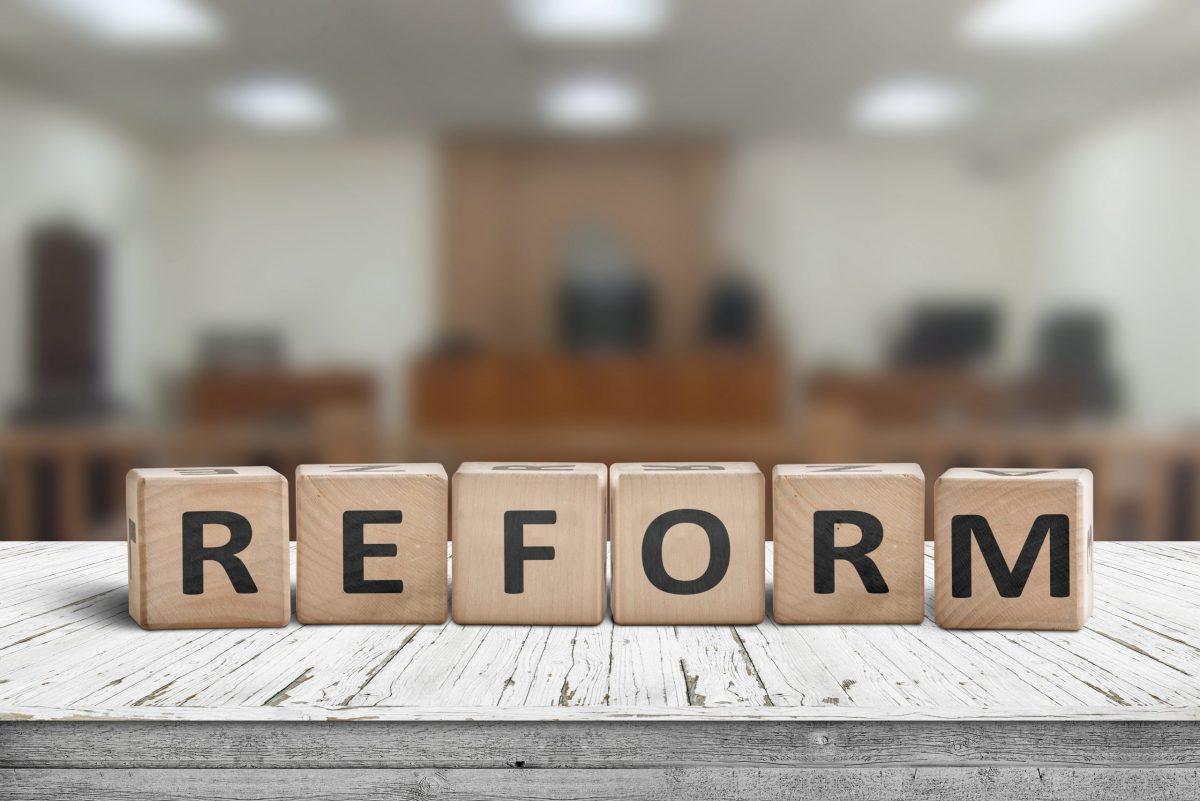
Setting the Record Straight: What the Executive Branch Can and Cannot Do to Nonprofit Organizations
04.21.2025 | May L. Harris, Esq., MA

In the earliest days of the pandemic, a few dozen major foundations “collectively agreed to loosen grantmaking restrictions to enable their nonprofit grantees to focus on responding to the crisis.” Within a short time, their “Call to Action” pledge drive attracted over 700 additional American and international funders.
It’s now fifteen months later and there’s light at the end of the COVID-19 tunnel. So how did all that work out? And which long-overdue reforms will be continued beyond the current emergency? [Note: This post was drafted several weeks ago; how quickly the facts on the ground have changed!]
There are no firm answers yet, but some preliminary hard data and research analyses are available along with lots of anecdotal evidence on these points of keen interest to the nonprofit sector.
Before COVID-19 shattered our collective notions of “normal” in March 2020, there already had been a few cracks in the rigid and top-down hold of charitable funders over grant dollars and the grantmaking process. It was a status quo that not only reflected the entrenched power imbalance between grantors and grantees but also widened it further.
Concepts like “trust-based philanthropy” and “participatory grantmaking” had begun to emerge from the shadowy edges of philanthropy thought leadership. Recent bold pilot programs by some major players like the Ford Foundation fueled this move into the sunlight.
Reform was long overdue. See, for example, Why Grantmakers Need to Break Their Restriction Habit—Permanently (April 17, 2020), Claire Knowlton, The Nonprofit Quarterly. “For years,” explains the Nonprofit Finance Fund’s consulting director and former ED of a small, grassroots arts organization, “funders have been trying to come to terms with the unintended harm their restricted grantmaking has caused to nonprofit organizations and the communities they serve.” These tightly controlled awards “are like the cigarettes of the nonprofit world. They hurt the smoker and everyone around them.”
And there’s nothing like the stark realities of a crisis – a worldwide health and economic catastrophe, actually – to turn once fringe or unthinkable ideas into the possible or necessary. And as the magnitude of the upheaval came into focus, “many philanthropy experts saw the crisis as a moment to reinvent how foundations give.”
A few dozen of the top grantmakers in the United States including the Ford Foundation announced a pledge in the third week of March 2020 to radically and immediately shift their grant parameters and requirements to meet the urgency of the moment. See A Call to Action: Philanthropy’s Commitment During COVID-19 [“…(T)he shocks of this ‘new normal’ are severe and unanticipated for our sector and grantee partners. As leaders in philanthropy, we recognize the critical need to act with fierce urgency to support our nonprofit partners as well as the people and communities hit hardest ….”]
More particularly, the signing funders pledged to, “among other things, provide general operating support to grantees, reduce the number of required site visits and written reports, let grantees off the hook if they miss deadlines or cancel events, and support advocacy efforts to ensure an equitable response to the virus and the economic hardship it has created.” See Top Foundations Unite to Give Charities More Freedom Over Grants (March 19, 2020) Alex Daniels, The Chronicle of Philanthropy.
“It’s time to quit,” Claire Knowlton tells her “funder friends” around that time. Nonprofits are “sick of” it. And she warns of half-hearted measures, of “muddling around the edges” of this “unhealthy system….” Just “temporarily lifting restrictions, expanding some of the costs covered in a restricted grant, or increasing indirect rates is like introducing filtered cigarettes – the addiction continues and the damaging effects remain.”
So what’s happened?
“Hundreds of foundations pledged to alter their grant-making practices in response to the coronavirus pandemic.” See Nearly 700 Foundations Join Pledge to Ease Grant Restrictions (April 22, 2020) Alex Daniels, The Chronicle of Philanthropy. “Now comes the tricky part: making sure they stick to it.”
Mr. Daniels and his colleague Michael Theis quickly followed-up. See How 25 Big Grant Makers Are Responding to the Covid Crisis (April 30, 2020) The Chronicle of Philanthropy. “To better understand what is happening at Gates and other major foundations” in connection with this pledge, “the Chronicle surveyed and examined public statements from the 25 that gave the most in 2019, according to data collected by Candid. The Candid data is preliminary so some foundations may have given more last year as the research organization finishes its collection work but we based our look at what is known today.”
Five weeks or so into the pandemic – of these top 25 grantors, “…five said they planned to or were very likely to increase grant-making levels this year” and eight “said they planned to maintain their giving levels. The others either were assessing the situation or did not specify….” And “…while the big foundations are stressing flexibility for grantees in their public pronouncements, nine have not signed the pledge from the Council on Foundations.”
Of particular note in this article are two charts that “detail grant making and policies at the 25 foundations the Chronicle surveyed.” In the first chart – “grantmaking,” there’s a table listing each of the top 25 (whether or not they signed the pledge), followed by columns indicating: “Covid grantmaking to date,” “Total 2020 grantmaking to date,” “Contributed to or created emergency Covid fund,” and “Future grantmaking levels.”
The second table, titled “policy changes,” includes these columns: “Signed COF pledge,” “Will be more flexible with grantees,” “Started or gave to Covid response fund,” “Cancelled events or travel; other changes,” and “Plan to change hiring.”
Ordinarily, social scientists like to collect data and conduct in-depth surveys and interviews followed up with a significant block of time for analysis and reporting of findings. But the COVID-19 emergency has been particularly ill-suited for anything as usual – including research and reports.
The dire circumstances, the continually changing realities on the ground, and the distractions for both researchers and subjects of navigating the day-to-day challenges of the pandemic meant that some methodology corners would have to be cut. Nevertheless, this work was needed even if on an expedited basis. And it’s provided significant value including as “snapshots in time” in an era of dramatic and continuing upheaval and uncertainty.
Here, we present summaries and links to two additional reports that cover the data-collection periods through May and June 2020.
Exponent Philanthropy is a membership organization of “lean funders”: that is, those that “practice philanthropy with few or no staff.” They are foundations (including some community foundations) and donors in all regions of the U.S. and “across a wide variety of causes and issues.”
In April 2020, the group conducted a survey of their members to find out how this subset of funders was “responding to COVID-19. There were more than 900 responses. The organization published a brief but “high-level overview” dated May 7, 2020, though they continued to analyze the data and encourage more responses. (Indeed, they followed up with weekly live discussions with members to glean more information over time.)
The key earliest finding published in early May 2020 was that almost “80% of [survey respondents] have changed their approach to funding as a result of COVID-19.” Among respondents who reported they had not made changes to date, “almost 20%” indicated they “plan to change their approach in the next year.”
“Almost half of survey respondents say they’ll give more [in 2020] because of the pandemic.” And a “majority were already making other important changes” including “shifting some of their funding to support new populations” including “individuals who have been economically affected by COVID-19.” And about 2/5s of this responding group reported “making grants to nonprofits outside their typical portfolio.”
Among the reported or planned changes were “making emergency response grants” and “converting grants to more flexible funds.” See link to chart detailing “the approaches funders have implemented, are considering, or deciding against.”
In Lean Funders Are Adjusting Grantmaking and Operations to Respond to COVID-19: Week of May 19 (May 19, 2020) Brendan McCormick, Exponent Philanthropy Blog, the group reported on already productive follow-up discussions among the members. “Funders are examining the practices they’ve put in place during the pandemic that they want to continue. Whether better collaboration, streamlined applications, faster approvals, or getting money to grantees more quickly, funders are taking stock of their improvements.”
Among the notable comments at the first live discussion in mid-May was one highlighting the need to narrowly target (their smaller) grants to maximize impact: “Instead of funding widely and hoping some of that reaches the margins, we put funding the people at the margins at the center of our work.” And one community foundation executive said: “We’ve proven to ourselves and our grantees that we can be nimble and responsive. Why shouldn’t we do that moving forward?”
Indeed, funders large and small discovered quickly that the sky didn’t fall when they made emergency changes in their practices and priorities.
The mission of the Center for Effective Philanthropy is “the development of comparative data to enable higher-performing philanthropic funders.” CEP has been a major player in the body of research and analysis on how funders have stepped up to the plate (or not) in response to the COVID-19 crisis. In particular, this organization has examined to what extent the philanthropic sector has pivoted away from entrenched practices and priorities to meet the urgency of the moment, and how much change will take hold permanently.
Funder Support During the COVID-19 Pandemic is an 18-page – visually engaging – presentation of study findings from a survey CEP sent out in May 2020 to its Grantee Voice panel, “a national sample of CEOs from nonprofit, grant-seeking organizations that receive at least one grant from foundations giving $5 million or more annually.” Of 575 surveys sent out, there 172 respondents. Though not a particularly high response rate (29%), there was no significant difference from the non-responding panel members in terms of “staff size, annual expenses, or region of the United States….”
Note that this early survey asked the grantees about their initial experiences with COVID-19 philanthropic funding. (Later reports focus on the funders’ self-reporting and perspective.)
There were three “research issues” and corresponding “findings.”
The meatiest of these categories is the third one. It has several subsections – about funder helpfulness, communications, and actions, for instance – and it’s chock full of charts and tables. The most intriguing of these is: “Actions That Staffed Foundations Have Taken.”
The line items that were asked of the responding (nonprofit grant-seeking organization) CEOs match up reasonably well with the proposed reform measures encouraged in the March 2020 funder “pledge” that by this time had some 800 or so signers.
The tables would have been more helpful, though, with a better menu of choices than just the three offered:
“None” is an easy choice. But there’s quite a lot of real estate between 1% and 49% and between 50% and 100%.
With that caveat, here they are, with the left-hand numbers being the “none” answer:
We’ll continue with more snapshots in time for the rest of 2020 and then the first half of 2021. It’s all with the aim of providing some insight (and links for more in-depth analysis) about whether philanthropy funders matched with action their enthusiastic pledges in their earliest days of the COVID-19 pandemic to break away from their rigid and top-down grantmaking practices and policies.
And the key question, of course, is whether those who rose to the occasion will continue on the reform path or revert back to the status quo. See, for instance: Why Flexible Funding Needs to be Philanthropy’s New Normal (May 4, 2021) Nabeeha Kazi Hutchins, Center for Effective Philanthropy Blog
— Linda J. Rosenthal, J.D., FPLG Information & Research Director
